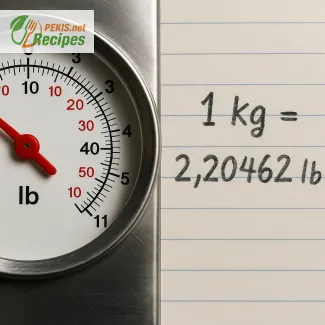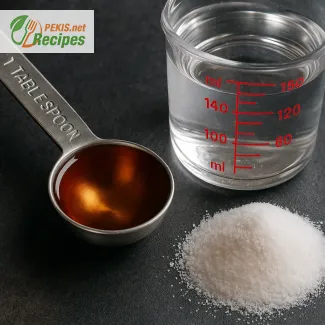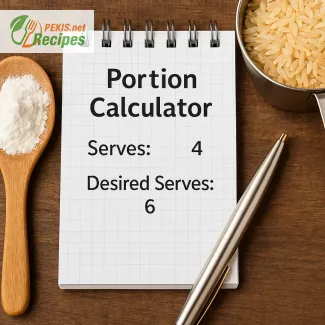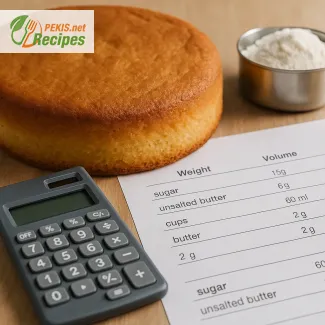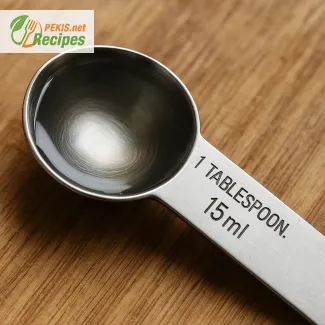
A UK tablespoon equals 15 ml, which is slightly different from the US tablespoon (14.2 ml) and the Australian tablespoon (20 ml). Knowing the exact ml conversion helps prevent mistakes in sauces, batters, and dressings where balance matters. 3 teaspoons equal 1 tablespoon, making quick adjustments simple when measuring. Using the correct UK standard ensures consistency in flavor, texture, and cooking results across recipes.
Understanding UK Tablespoon to Milliliter Conversion in Everyday Cooking
Why the UK tablespoon matters in precise kitchen measurements
A UK tablespoon is not the same as a US tablespoon, and this small difference can make a big impact when preparing sauces, dressings, or baked goods. In the United Kingdom, one tablespoon equals 15 ml, while in the United States it equals 14.2 ml, and in Australia it equals 20 ml. This variation highlights why knowing the exact conversion of ml in 1 UK tablespoon is essential when following recipes from different regions.
The tablespoon has a long history as both a household item and a standardized unit of measurement. Originally tied to the size of a common spoon, it became a regulated measure in British cooking during the 19th century when culinary books began emphasizing accuracy. Over time, the UK tablespoon became firmly defined at 15 milliliters, setting it apart from other regions and ensuring consistency in British and Commonwealth recipes.
Semantic context: tablespoons, teaspoons, and metric milliliters
Kitchen conversions often link together several related measures:
- 1 UK tablespoon = 15 ml
- 1 UK teaspoon = 5 ml
- 3 teaspoons = 1 tablespoon
- 1 UK tablespoon = 0.5 US fluid ounces (approx.)
These relationships allow quick mental calculations and make it easier to adapt recipes across different measurement systems. Whether preparing custards, marinades, or salad dressings, knowing how many milliliters fit into a tablespoon UK standard prevents errors in texture, flavor balance, and cooking times.
Why you’ll love this article
- Clear explanation of UK tablespoon vs. ml
- Quick reference values for ml conversions
- Insights into the history of tablespoon measurements
- Practical kitchen examples for everyday use
- Easy tips to avoid common mistakes when converting
Storage and make-ahead guidance
When preparing sauces, dressings, or batters measured with UK tablespoons, you can store them effectively:
- At room temperature: up to 2 days (depending on the recipe)
- In the refrigerator: 4–5 days in an airtight container
- Freezing: up to 2 months, best in portion-sized containers
- Reheating: 150 °C for 8–10 minutes in the oven or gently warmed on the stovetop
This ensures that precise tablespoon to milliliter conversions remain practical even when cooking ahead of time.
Creative variations and usage ideas
Different ingredients behave differently when measured by the tablespoon:
- Oils and fats: A UK tablespoon of olive oil (15 ml) will add richness without overpowering a dish.
- Sugars: Granulated sugar measured by tablespoon creates consistency in baking where weight and texture are crucial.
- Spices and seasonings: Even small changes in a tablespoon measurement can alter balance, making exact ml conversion valuable.
- Liquid flavorings: Vanilla extract or lemon juice measured accurately ensures reliable flavor strength.
By experimenting with precise conversions, you can adapt recipes more easily to your own taste, ensuring that every tablespoon adds the right intensity.
Common mistakes to avoid
- Confusing UK tablespoons with US tablespoons, leading to small but noticeable differences.
- Measuring dry ingredients by volume instead of weight when precision is critical.
- Overfilling a tablespoon instead of leveling it off, which can add 2–3 ml more than intended.
Understanding these details allows you to achieve better results in cooking and baking.
Alternative ways to calculate
If you do not have a UK tablespoon at hand, use these substitutes:
- 3 teaspoons = 1 tablespoon = 15 ml
- Half a standard metric measuring cup (30 ml) = 2 tablespoons
- Kitchen scales provide the most reliable method when measuring in grams for solids, avoiding conversion errors.
Using these alternatives ensures accuracy without requiring specialized utensils.
FAQ questionWhat is 1 UK tablespoon in ml?
A UK tablespoon equals 15 ml. This is the standard UK measure used in cookbooks, measuring sets, and food labels, so you can treat 1 tbsp (UK) = 15 milliliters in all routine kitchen conversions.
FAQ questionIs a UK tablespoon the same as a US tablespoon?
No. A US tablespoon is ~14.2 ml, while a UK tablespoon is 15 ml. That 0.8 ml gap seems small, but in baking or concentrated flavorings it can shift texture and taste. If you’re following a British recipe, stick to the UK 15 ml standard.
FAQ questionHow many teaspoons are in 1 UK tablespoon?
Exactly 3 teaspoons. Because a UK teaspoon is 5 ml, multiplying by three gives 15 ml. When scaling recipes, use 3 tsp = 1 tbsp (UK) for quick, reliable adjustments.
FAQ questionHow do I measure 1 UK tablespoon without a measuring spoon?
Use 3 level UK teaspoons (3 × 5 ml) or a 15 ml mark on a liquid measuring jug. When precision matters, pour to 15 ml rather than eyeballing a household spoon; everyday spoons can vary and throw off exact ml conversion.
FAQ questionDoes the ingredient change how many ml fit in a tablespoon?
The volume stays 15 ml, but weight (grams) changes by ingredient. For example, 15 ml of oil doesn’t weigh the same as 15 ml of honey. Think volume (ml) for liquids and small-quantity add-ins, and weight (g) for accuracy with dry or dense ingredients.
FAQ questionWhy do some recipes say a tablespoon is 20 ml?
That’s the Australian standard: 1 tbsp (AU) = 20 ml. If you see 20 ml tablespoons, the recipe likely comes from Australia or uses Australian cookware. Convert by ratio: 1 AU tbsp (20 ml) ≈ 1⅓ UK tbsp (15 ml).
FAQ questionCan I convert a UK tablespoon to grams?
Yes, but you need the ingredient’s density. A tablespoon is 15 ml, so grams = 15 × density (g/ml). For common kitchen use, consult a ml-to-g table per ingredient or weigh on a digital scale when accuracy is critical.
PEKIS – professional chef and recipe developer with over 25 years of experience, specialized in European and international cuisine. For this guide, I’ve drawn on my background in traditional British cooking and my hands-on work with precise kitchen conversions, making sure the details about the UK tablespoon are accurate and practical for everyday use.
